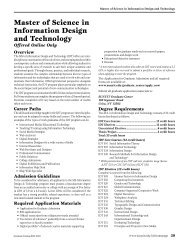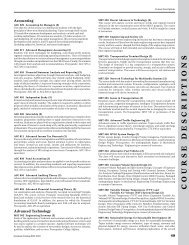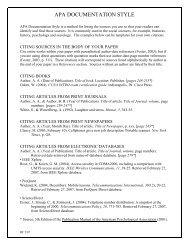Expanding the Public Sphere through Computer ... - ResearchGate
Expanding the Public Sphere through Computer ... - ResearchGate
Expanding the Public Sphere through Computer ... - ResearchGate
You also want an ePaper? Increase the reach of your titles
YUMPU automatically turns print PDFs into web optimized ePapers that Google loves.
CHAPTER 2. THE PUBLIC SPHERE 35<br />
orientation required information and discussion and topics which had been <strong>the</strong><br />
monopoly of <strong>the</strong> Church and of <strong>the</strong> State gradually came to be interpreted <strong>through</strong><br />
<strong>the</strong> institutions of <strong>the</strong> emerging public sphere. The fact that <strong>the</strong>se institutions<br />
existed indicated that <strong>the</strong> State and <strong>the</strong> Church has effectively lost control over<br />
certain domains which previously were not subject to question, and suggest that<br />
<strong>the</strong> public, as constituted <strong>through</strong> <strong>the</strong>se institutions, was beginning to determine<br />
<strong>the</strong> meaning of literature, art, economics and politics on its own <strong>through</strong> vigorous<br />
discussion and criticism.<br />
Similarly, MacKuen (1990, 84) emphasizes <strong>the</strong> importance of a diversity of political<br />
views in order to produce public dialogue in which “individuals engage in<br />
political discussions with o<strong>the</strong>rs who hold different viewpoints.” Dahl (1989, 339)<br />
too, notes that citizens must have access to information from a diverse group of<br />
sources in order for a democratic vision to be realized. A part of <strong>the</strong> first aspect<br />
of diversity is <strong>the</strong> range of views actually discussed in a public sphere. Opportunities<br />
to discuss any topics are not synonymous with having a full range of topics<br />
actually discussed. The idealized public sphere overcomes <strong>the</strong> “spiral of silence”<br />
(Noelle-Neuman 1984) that develops when individuals do not feel <strong>the</strong>ir views are<br />
acceptable in public discourse, and choose to keep silent ra<strong>the</strong>r than express <strong>the</strong>m<br />
in <strong>the</strong> face of obvious opposition.<br />
Reciprocity refers to <strong>the</strong> opportunities to gain knowledge of <strong>the</strong> perspectives of<br />
o<strong>the</strong>rs, and <strong>the</strong> degree to which <strong>the</strong>se opportunities are realized. Rucinski (1991,<br />
189) identifies conditions of full and partial reciprocity:<br />
Full, or symmetric, reciprocity occurs when all members of a collectivity<br />
know and understand <strong>the</strong> breadth of perspectives and <strong>the</strong>ir underlying interests<br />
existing in that social system. Partial reciprocity occurs in two primary<br />
ways: when all perspectives and underlying interests regarding a social/political<br />
issue are not known by all members of a collectivity; or when<br />
<strong>the</strong> perspectives are known, but <strong>the</strong> interests are not.<br />
The level of reciprocity within a system can be assessed by examining <strong>the</strong><br />
direction and degree of association between <strong>the</strong> range of perspectives and<br />
<strong>the</strong> corresponding underlying interests within a collectivity and <strong>the</strong> extent<br />
to which members jointly understand <strong>the</strong> viewpoints of o<strong>the</strong>rs and <strong>the</strong> interests<br />
underlying those perspectives. Operationally, <strong>the</strong>n, reciprocity is <strong>the</strong><br />
ratio of perspectives and underlying interests known to <strong>the</strong> perspectives and<br />
underlying interests available across members of a collectivity.
















